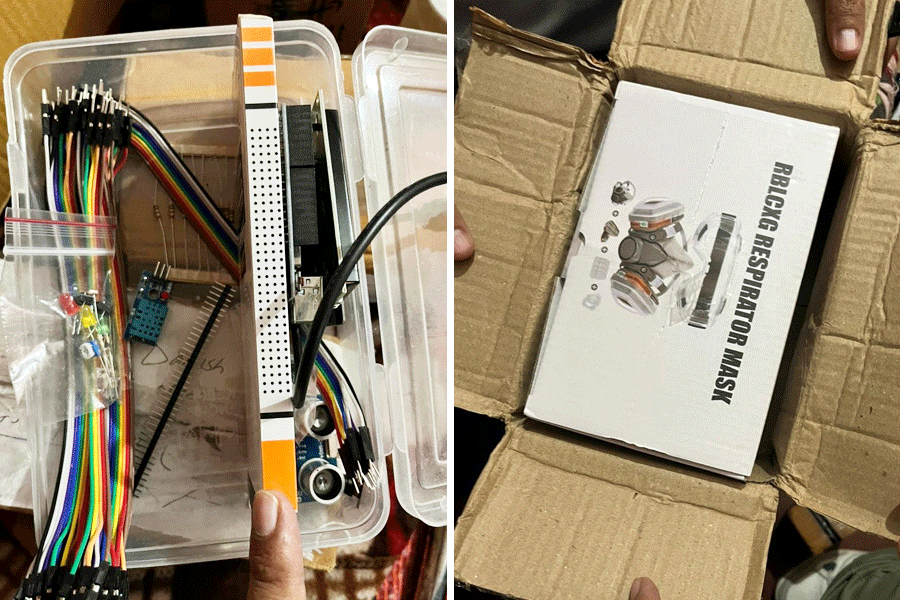 |
No matter what you do ? or what your doctor prescribes ? a common cold will run its course before subsiding. As will some stomach upsets, headaches, viral fevers and those myriad health troubles that don’t always need medical advice, but may be tackled with non-prescription, or over-the-counter (OTC) drugs.
The lax implementation of drug laws in India may prompt even government officials to concede that almost any drug would be available without a prescription. But a fresh debate is now brewing over whether India should expand the number of OTC drugs and whether such drugs should be allowed to be sold from grocery stores.
Sections of the drug industry want OTC medications such as cold and cough medications, antacids, laxatives and tropical creams against fungal and bacterial infections, among other products to be stocked and sold by not just chemists but other retail outlets such as neighbourhood kiranawalas.
At a brainstorming session on self-medication in New Delhi earlier this month, officials of the Organisation of Pharmaceutical Products of India (OPPI) said they have requested the government to revise its rules on OTC drugs. India has less than 12 drug molecules ? aspirin, antacids, vitamin C among them ? that are currently OTC drugs. All other drugs are expected to be sold on prescription. But OPPI officials say the list of OTC drugs needs to be revised.
“Even Mexico, a developing country, has over 200 drugs under OTC,” says Zarir Charna, an independent pharmaceutical consultant and a delegate at the brainstorming session. “Expanding the number of drugs available under OTC would benefit consumers. They could treat themselves for minor conditions and avoid visits to doctors who would then have more time to look after patients with more serious ailments,” Charna says.
The OPPI has specifically asked the government to remove the distribution restrictions that allow the sale of OTC products as household remedies by non-chemist outlets only in towns with populations of less than 1,000 people. “This is an outdated rule and needs to be revised so that OTC medicines sold as household remedies are more accessible than they are today,” says Charna.
The OPPI says data from the World Self-Medication Industry on consumer practices in 14 countries from Asia, Europe and America shows that consumers can practise self-medication responsibly. A letter sent by OPPI to the drug controller-general of India has said that self-medication “allows informed and rational choice by consumers and recognises the individual’s right to make decisions or choices about his or her own health”.
But medical experts dismiss the OPPI statement as absurd. Medical care often cannot be left to the decision of an individual. They say that the sale of drugs under OTC assumes that lay people are competent to make a provisional diagnosis and then use the appropriate drug in appropriate dose for the appropriate duration before seeking medical advice if the problem persists.
“Such a situation is possible only when there is near- complete literacy and information about drugs is available in the language in which people are literate,” says Dr Chandra Gulhati, editor of the Monthly Index of Medical Specialities (MIMS), India, an independent drugs journal.
Gulhati argues that current circumstances in India do not favour an abrupt expansion of the number of drugs under OTC. The low medical literacy among the population, dozens of brand names for a single drug molecule, near-identical brand names for different drugs, and the conspicuous absence of product leaflets with drugs sold may lead to situations where consumers end up abusing OTC drugs, says Gulhati.
While brand names may be easily recognised, even well-educated people often don’t know the exact identity of the drug. A week-long study by MIMS last year showed that among 100 English-speaking people who visited chemists to buy Crocin, 90 per cent did not know that the generic name of the drug is paracetamol. Also, many people are not aware of conditions in which certain drugs cannot be taken. “How many people know that ibuprofen is not to be taken by asthmatics or during the third trimester of pregnancy or that the risk of gastric bleeding increases if alcohol is also consumed?” asks Gulhati.
Knowledge of the content of drugs becomes important in a country where brand names of drugs can cause confusion. “There is total anarchy in the use of brand names for medicines in India,” says Gulhati. He cites the example of how one drug manufacturer sells a low-sodium salt product under the brand name of Lona while another drug manufacturer sells an anti-epileptic drug called clonazepam as Lona. The same brand name AZ is an antibiotic from one company, an anti-worm drug from another and an anti-allergic drug from a third. Medical experts also point out that in the absence of information leaflets, it is not possible for companies to deliver even minimum information required by consumers for the judicious and safe use of even OTC drugs.
Even a large number of prescription medicines today do not contain product information for consumers. Gulhati argues that the comparison with Mexico is inappropriate. The level of literacy in Mexico is higher than in India and Spanish is the single national language of Mexico. With India’s multiple languages and multiple scripts, getting the right information about OTC drugs through product leaflets would pose a daunting challenge.










